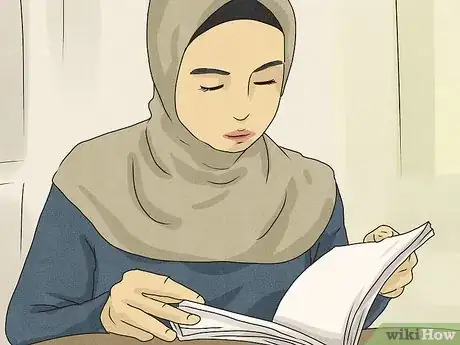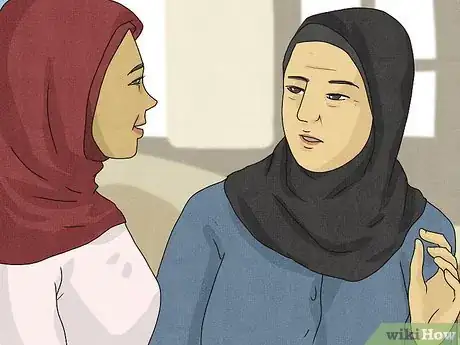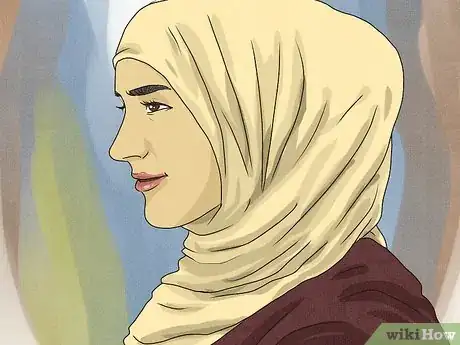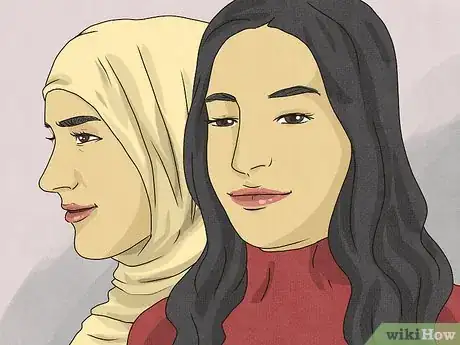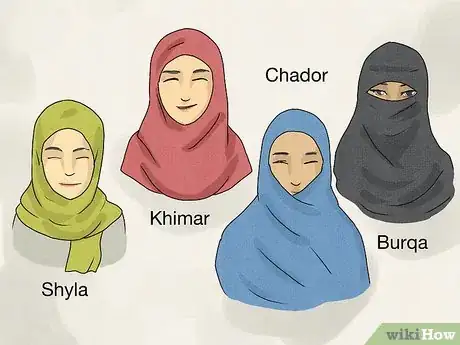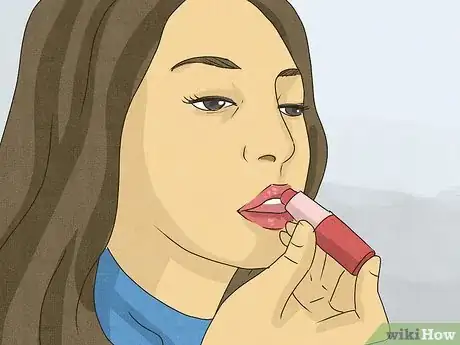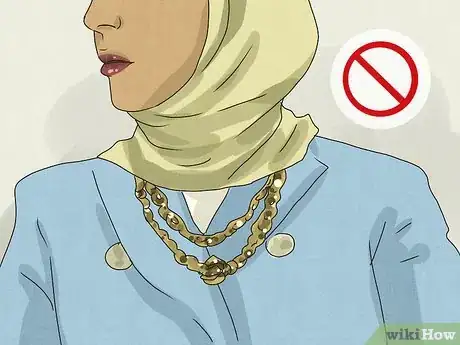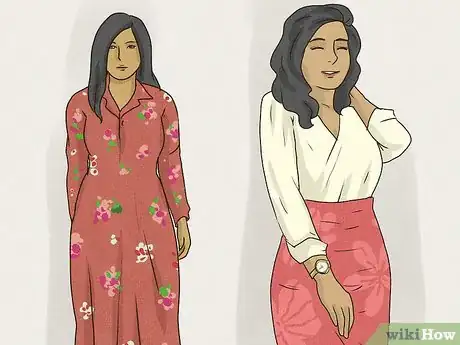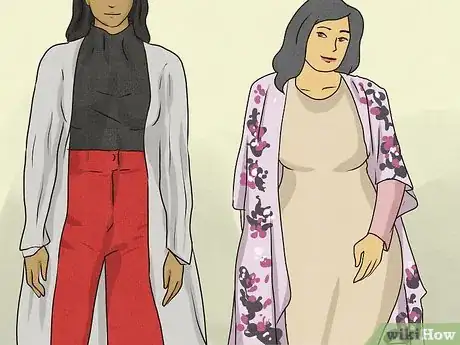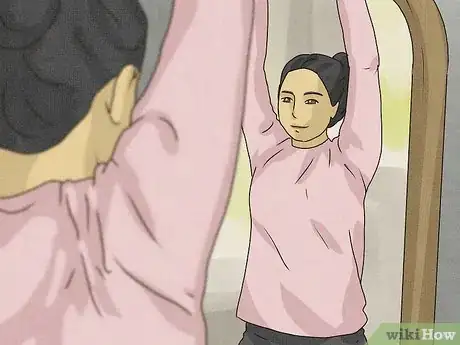wikiHow is a “wiki,” similar to Wikipedia, which means that many of our articles are co-written by multiple authors. To create this article, 59 people, some anonymous, worked to edit and improve it over time.
wikiHow marks an article as reader-approved once it receives enough positive feedback. This article has 30 testimonials from our readers, earning it our reader-approved status.
This article has been viewed 445,260 times.
Learn more...
Hijab is the principle of modesty in Islamic culture, as well as the word used to define the veil Muslim women wear. A Muslim woman has the right to interpret the modesty rules outlined in the Qur’an. As a result, there is not one right way for a Muslim girl or woman to dress modestly, but a multitude of right ways. While many make the decision to wear a hijab, others opt not to wear the covering.[1]
Steps
Making an Informed Decision
-
1Study and assess religious and scholarly literature pertaining to modesty in Muslim culture. For centuries, scholars have debated the rules of modesty outlined for followers in the Qur’an. Familiarizing yourself with these arguments and interpreting the scriptures of the Qur’an will help you understand the benefits of hijab and prepare you to make an informed choice.[2]
- Be open to reading authors that do not support your personal perspective.
-
2Discuss the topic of modesty with your parents. Talk to your father and mother about their expectations for how you dress and ask them to provide you with some suggestions and guidance. Ask your parents what they think it means to dress modestly. Are they comfortable with you wearing long dresses or skirts or would they prefer you to wear an abaya? How do they feel about the niqab?
- Go shopping with your mom and/or dad.
- Talk with the women of your family about how they reached their own personal interpretation of the requirements of hijab.
Advertisement -
3Determine what it means for you to dress modestly. It is a personal choice that will be informed primarily by your religious beliefs, but also political opinions and cultural understanding.
- You can wear the hijab even if you can't fully commit to wearing it every day. What matters is that you are trying. It's better to wear the Hijab sometimes than not to wear it at all. Of course, one's goal should always be to wear the hijab every day.
- Frequently alternating between wearing and not wearing the hijab should be avoided as Allah prefers consistency in acts of worship.
- Hijab is not just a piece of clothing; it represents modesty. Just because you choose to wear the hijab, doesn't make you a modest person. Hijab is a way of life.
-
4Reaffirm your decision periodically. While you may initially choose to wear a hijab as a teenager, you may be tempted to uncover as an adult. This is very common. Don’t hesitate to review the evidence and rationale for covering from the Qur'an and Sunnah if you need a reminder.
Dressing Modestly while Wearing a Hijab
-
1Wear a hijab, or head covering. In the Qur’an, Allah commands that women should only expose that which must ordinarily appear.[3] Many interpret this to mean that only a woman’s hands, face, (and sometimes feet) may be displayed. Women honor this rule of modesty by wearing a hijab, a veil that wraps around their head, leaving the face uncovered while completely concealing their hair, neck, and chest. You may choose from several types of hijabs, or head coverings. Pick the one that is right for you:
- Shayla: Wrap this rectangular scarf around your head and use a pin to secure it at your shoulders.
- Khimar: Wear this cape-like scarf wrapped tightly around your head. It will hang loosely at your mid-back.
- Chador: If you prefer more coverage, choose this floor-length scarf. It is a longer version of the Khimar.
- Niqab: The niqab is a cloth face covering chosen by many Muslim women to provide additional protection.
- Burqa: The burqa will cover you from head-to-toe—a small mesh panel over your eyes is the only opening.
- Traditionally, hijabs come in plain, non-attention-grabbing colors, like black, white, blue, and brown. If you feel comfortable wearing colors and patterns, a fashionable scarf from your local department store may be substituted for a solid colored hijab.
-
2Wear loose-fitting clothes. With your hijab, wear loose, non-revealing tops and bottoms. Sheer and or figure-hugging clothing should be avoided.
- Remember, the type of clothing you wear with your hijab is completely dependent upon your comfort level and understanding of modesty. Ask your parents for a second opinion if you are unsure about a certain piece of clothing.
- If you prefer full coverage, shop for maxi skirts, wide leg pants, long dresses and abayas.
- Want to wear skinny jeans or leggings? Pair them under a long flowing top or dress.
- If you want to wear a tighter outfit, cover it up with an abaya, jilbab or mumu.
-
3Apply natural-looking make-up.[4] Like bright colors and patterns, make-up should be worn sparingly. If you choose to wear make-up on a daily-basis, go for a natural look. Apply minimal amounts of foundation, blush, mascara, and lip-gloss to enhance your natural beauty and features.
- For a "no makeup" look, you can use tinted moisturizer, BB cream, or CC cream for your complexion. Add some concealer for correcting any blemishes or dark circles, a little bit of bronzer for your cheekbones, upper forehead and eyelids, and some lip balm for your lips.
-
4Limit the amount of jewelry you wear. Avoid chunky necklaces and statement earrings. Instead, select small, dainty pieces of jewelry that can easily be tucked under your hijab.
- If you are open to accessorizing your look, try to chose adornments that are understated.
- Avoid any ostentatious branded or designer hijabs.
Dressing Modestly while not Wearing a Hijab
-
1Wear non-revealing clothes.[5] You can still dress modestly if you choose not to wear a hijab. Instead of wearing tight, revealing tops and bottoms, put on wide-leg pants and a matching long-sleeve shirt. Consider traditional clothes such as kurtas and salwar that do not reveal the body.
- Base your outfits on your personal comfort level.
- Maxi-skirts, long dresses, and flowy tops are essential staples of a modest wardrobe.
- Seek a second opinion if you are unsure whether a certain top or bottom is too tight.
- Full coverage does not have to look dowdy and matronly! Mix and match trendy items or vintage pieces with the staples of your modest wardrobe for a chic look. Pair black jeans with boots, a long wool trench coat, and a turtleneck sweater. You should keep in mind that the reason that you wear full clothes is so that you do not attract men so try to wear clothes that will not show your body shape. Don't wear short shirts; instead, wear long ones that hide your lower back.
-
2Layer your clothing. Laying your clothing is key to achieving an on-trend modest look. Do you have an absolutely amazing low-cut shirt in your closet? Make it modest by wearing it over a blouse or long-sleeved t-shirt for coverage. Add a scarf for additional coverage and a pop of color. Cover up tight skinny jeans with a long sweater, coat, or flannel blouse tied around your waist.[6]
- Get creative! Experiment with layer different pieces until you find a look that you are comfortable wearing.
-
3Wear tops with high necklines. Determine if a neckline is too low by measuring the distance from your collarbone to the top of your shirt using your fingers as a measuring tool—one to four finger-widths is ideal, while five finger widths may verge on too revealing. Cover your cleavage with turtlenecks, boatneck shirts, and blouses.
- Tie a scarf around your neck to cover a lower neckline.
- Wear a tank-top with a high neckline under a shirt that is too low in the front.
-
4Check your look in the mirror. Before going out, stand in front of a full length mirror. Bend forwards, backwards, and side-to-side. Try to sitting down and raising your arms. If your clothing shifts to reveal your midriff or your chest, consider changing or adding additional layers to your look before leaving the house.
-
5Apply natural-looking make-up. Opt for a care-free, natural look when applying your make-up. Use a small amounts of concealer, blush, mascara, and a dash of lip gloss for a fresh, simple look. Make-up should be used to enhance your beautiful, natural features, not overpower or mask them.
- During holidays, such as Eid, go for a more dramatic, sparkly look. Try a smoky eye and a berry lip! Depending on your skintone, you can pick a berry lipstick with warm or cool undertones.
- Ask your mom and friends for make-up tips. How do they achieve a natural look?
-
6Limit the amount of jewelry you wear. Simple, understated pieces of jewelry can have a major impact on any outfit. Chose dainty necklaces and earrings.
Community Q&A
-
QuestionHow do I transition into wearing a hijab?
 Community AnswerIf your niyaah (intentions) are pure to wanting the hijab then just do it. The fact that you're thinking about it is already a good sign. Start simple.
Community AnswerIf your niyaah (intentions) are pure to wanting the hijab then just do it. The fact that you're thinking about it is already a good sign. Start simple. -
QuestionPeople make fun of me because I'm not allowed to wear shorts. My parents say it is not modest. What do I say to the people who make fun of me?
 Community AnswerMost Muslim parents are more strict about the length of clothes than non-Muslims. You are not alone in this! If someone is making fun of you, ignore them and be confident: a hijab does not have to restrict your confidence. While you may not be allowed to wear shorts, you can still dress nicely and put effort into your appearance.
Community AnswerMost Muslim parents are more strict about the length of clothes than non-Muslims. You are not alone in this! If someone is making fun of you, ignore them and be confident: a hijab does not have to restrict your confidence. While you may not be allowed to wear shorts, you can still dress nicely and put effort into your appearance. -
QuestionDo I have to wear makeup before leaving the house?
 Community AnswerIt depends on you. If you want to, then you can wear makeup but if you don't wish to do so, then there is no harm done.
Community AnswerIt depends on you. If you want to, then you can wear makeup but if you don't wish to do so, then there is no harm done.
References
- ↑ http://www.bbc.co.uk/religion/religions/islam/beliefs/hijab_1.shtml
- ↑ http://www.womeninworldhistory.com/essay-01.html
- ↑ http://corpus.quran.com/translation.jsp?chapter=24&verse=31
- ↑ https://www.outfittrends.com/simple-makeup-with-hijab-tutorial-and-hijab-makeup-tips/
- ↑ https://www.abc.net.au/life/modest-fashion-is-the-trend-you-need-to-watch-out-for/10386936
- ↑ https://www.halalzilla.com/muslim-modest-fashion-4-tips/89548
About This Article
To dress modestly as a Muslim girl, wear loose-fitting clothes, like flowy tops, long dresses, and wide-leg pants. However, you can still wear items like skinny jeans and low-cut shirts by layering other clothes under or over them to make them more modest. For example, you could wear a low-cut shirt over a t-shirt and wear skinny jeans with a flannel tied around your waist. Additionally, you may also decide to wear a hijab or another type of head covering. If you're not sure if you're ready to take that step yet, try reading up on the different interpretations of modesty in Muslim culture so you can make an informed, personal decision. For tips on how to do your makeup modestly, scroll down!
